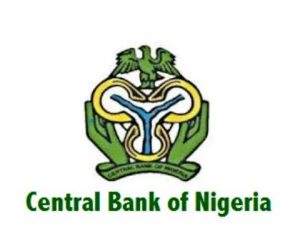‘Prospects thrive in improved monetary policy with adoption of digital finance’
Developments in digital financial technologies such as e-money, digital banking and crowd funding platforms have tremendously changed the accessibility of financial services over the last decade.

These developments includes the peer-to-peer transactions which permit economic agents to transmit funds in the absence of a banking channel as well as mobile software which also allows for financial transactions using smartphones.
However, digital financial innovation increases the range of intangible financial assets which may in future influence the ability of Central Banks to effectively conduct monetary policy.
The constant substitution of e-money for cash will boost the efficiency monetary policy implementation through the transmission mechanism of monetary policy.
Director, Monetary Policy Department, Hassan Mahmud stated this at the 31st Seminar for Finance Correspondents and Business Editors, Organised by the CBN in Enugu, Enugu State.
Represented by the Assistant Director, Payment System Management, CBN, Rekiya Yusuf, the Director maintained that among the reviewed African countries, Nigeria performed the least in terms of its financial market development, ranking 129 out of 180 countries.
The use of improved digital financial services according to him can increase affordability of financial services.
According to him, other African countries such as Kenya, Mauritius, Morocco and South Africa have more developed financial systems which have propelled digital financial services growth in the region.
He noted the fast growth in digital financial services in Sub-Saharan Africa and low usage of digital platforms by the public sector reflecting low participation in this sector.
He cited other factors propelling the growth of Digital Financial Services to include persistent increase in percentage of population that transacts using the digital platform, private sector embracing digital innovation in wage payments, faster growth in digital financial services in Europe and central area and this is driven by advancement in technology in the region.
Others are relatively low usage of digital platforms by the public sector reflecting low participation of labor in this sector, persistent increase in percentage of population that have made or received digital payments, Asian countries record increased participation in digital finance.
He noted that the growth in participation remains lower than that recorded in Europe and the development owes mainly to the region’s high smart phone penetration, utilization of ecommerce channels for daily activities, more than 80% of American population have made or received digital payments, due to the advancement in technology and more than 70% of the population pay bills using the internet.
The Director stated that the Central Bank of Nigeria in partnership with Bitt Inc., an international fintech firm, is set to launch its digital currency, “eNaira”
He listed the motivation to embark on digital currency to includes: increased cross-border trade, accelerated financial inclusion, cheaper and faster remittance inflows, easier targeted social interventions, improvements in monetary policy effectiveness and payment systems efficiency.
He noted that the CBN digital currency will offer parity of value and will operate as a non-interest-bearing asset. So also presentation to Nigerian banks about the design and operational module of the eNaira project, Nigeria’s digital currency will function under a tiered Anti-Money Laundering and Know Your Customer (AML/KYC) structure with different transaction limits.
The AML/KYC pyramid will reportedly encompass unbanked citizens to provide their national identity-linked phone numbers for verification and the users in this category will be limited to a daily transaction limit of N50,000 (about $120). So, also, the provision of collateralized e-Naira credit to IMTOs via their banking partners in the country.
Secondly, CBN pre-funding IMTO accounts, but this method might carry significant exchange fluctuation risks. Monetary Policy aims to achieve monetary targets and inflation objective according to him include, premised on the quantity theory of money (QTM) which links the stock of money (M) and its Velocity (V) to the market value of output that it finances (PY), where P is the price level and Y is the real output.
He stated that increased used of digital money products is expected to be reflected in the behaviour of Money velocity over time. Digital Money products is expected to act as substitute for CIC. Implications for Monetary Policy. Do Digital money products affect monetary policy instruments of: OMO, Cash Reserve Requirements, discount window operations, liquidity Ratio and short Term Interest rates”, he stated.
“Electronic money may not have effect on Monetary Policy. There is no creation of new money in the present fractional reserve system. Digital money does not affect Reserve Money (DMB’s reserves plus CIC, no Cash reserve requirement (CRR) yet for electronic money. can affect the Velocity of Narrow Money, (being the main means of payment).
